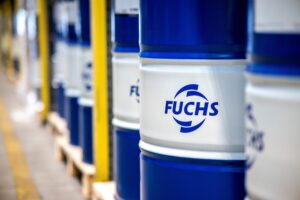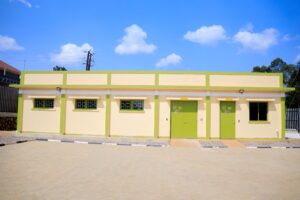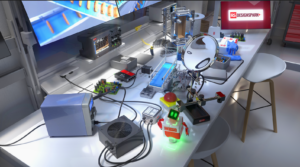By Mareli Botha, Technical Director, Zutari
Engineers have long drawn inspiration from nature. Examples of such biomimicry include passive ventilation systems modelled after termite mounds and wind turbine blades with scalloped edges, inspired by humpback whale flippers, which dramatically reduce drag.
Now, an emerging field is inspiring engineers to model industrial systems on nature’s elegantly designed cycles and systems. After all, as with biomimicry, engineers and nature want the same thing – to create efficient, resilient, and sustainable systems. Nature, however, is far better at this than we are.
Consider nitrogen, for example. The nitrogen cycle tirelessly extracts this essential element from the atmosphere and transforms it into usable forms through complex interactions among microorganisms, fungi, and plants. Remarkably, this cycle is circular and waste-free; nitrogen is re-extracted from waste products through further interactions and returned to the atmosphere for long-term storage.
When we examine the deep, long-term sustainability of natural systems like these, we notice key points: they encourage abundant life and growth, are largely mutualistic, and are highly resilient. Industrial Ecology aims to replicate this deep sustainability by fostering economic growth, benefiting all stakeholders, and providing the resilience needed to face threats like climate change.
In approaching this goal, Industrial Ecology offers several key practices. These include Material and Energy Flow Analysis, which examine how resources move through industrial systems and seeks to identify opportunities to reduce inefficiencies and waste.
Lifecycle Assessment (LCA) evaluates the environmental impacts of products and processes from cradle to grave, ensuring sustainability is considered at every stage. Eco-design integrates environmental considerations into product development, aiming to create products that are sustainable throughout their lifecycle. The concept of a Circular Economy emphasises the creation of closed-loop systems where resources are continuously reused and recycled, eliminating waste and reducing the need for virgin materials.
Remarkable and exciting work is being done in this field. For instance, the Kalundborg Eco-Industrial Park in Denmark exemplifies industrial symbiosis by having multiple industries collaborate to utilise each other’s waste as resources. Companies like Interface Inc. are pioneering eco-design and circular economy principles by recycling old carpet tiles into new products. Germany’s Energiewende policy is leading a national shift towards renewable energy and smart grid technologies, while London’s Circular Economy Route Map promote sustainability and resilience at a systemic level.
Industrial Ecology is particularly well-suited to a resource-constrained context. It teaches us to do more, better, with less. By working in smarter, leaner, more connected ways, we can overcome constraints and maximise the positive impact of infrastructure development.
In Africa, ageing infrastructure presents unique challenges and opportunities. Implementing sustainable processes in old plants is complex; for example, creating a digital twin for optimisation is often impractical due to a lack of existing plans or data. Industrial ecology helps identify effective levers for impactful change.
Small adaptations can sometimes lead to significant improvements, though pinpointing these within complex systems require substantial expertise. Infrastructure owners, investors, and managers can benefit from consulting partners who bring broader technical, social, and legal perspectives, and additional capacity, to identify and activate those levers most likely to enhance environmental, social, and economic sustainability.
A prime example of Industrial Ecology’s broader approach to sustainability is the SANRAL N2 Legacy Programme, led by Zutari’s Social Development Team. Zutari was appointed by SANRAL to design and oversee parts of the N2 Wild Coast Road development, a multi-billion-rand project. While construction will create significant employment opportunities, these jobs will not fully address the high unemployment in surrounding communities, which remains a major driver of opposition to infrastructure projects in the Wild Coast, posing a risk to the project’s smooth execution.
In response, SANRAL partnered with Zutari to develop a Legacy Programme aimed at maximising long-term impact and addressing unemployment. This programme empowers 14 rural villages to create and sustain businesses, promoting social, economic, and environmental sustainability. It moves beyond temporary job creation to build growing, circular economies that capitalize on the new road’s opportunities. By linking livelihoods to natural resource conservation, it incentivizes environmental protection. The Programme also achieved broad community support for the road project, mitigating the risk of project delays due to community opposition.
In addressing the complex challenges of our time, we must guard against a narrow view of sustainability. When sustainability becomes a check-box exercise, we miss out on tremendous opportunities to create win-win systems. We also create real risks. There have been cases where industries inadvertently increased their output of harmful chemicals – more harmful than carbon – in their efforts to reduce carbon emissions and gain market share.
Social, economic, and environmental sustainability are more than a triple bottom line; they are parts of a complex, and inseparably integrated system. Let us connect differently, across traditional boundaries, to explore our shared challenges more deeply. Let us draw inspiration from nature’s intricate designs and elegant solutions to create deeper sustainability, together.
Ends
Notes to the Editor
To download hi-res images for this news article, please visit http://media.ngage.co.za and click the Zutari link to view the company’s press office.
About Zutari
As an infrastructure, engineering and advisory practice, we believe infrastructure has unparalleled potential to create enduring impact. Never more relevant, this potential can be realised only if we plan, design, deliver and manage infrastructure in ways that maximise its value. Our work in water, transport, energy, resources, and built-environment infrastructure does just this – helping to nurture thriving communities, growing economies, and healthy environments.
At Zutari we understand that radical impact doesn’t just happen; it requires more of us to connect differently, work smarter, and stay rooted.
We connect differently. Our broad collective of in-house experts connects across traditional disciplines to provide integrated results. We collaborate with clients, partners, and end-users, leaning into diverse perspectives to create superior solutions – together.
We work smarter. Our people lead the industry. We draw from deep technical skills, accrued over decades, and embrace the transformative power of digital technology to find simpler, better, and more innovative ways to deliver value.
We stay rooted. Few can rival our local capacity and understanding. Building on solid foundations, now 90 years in the making, we are trusted to shape locally relevant solutions through our extensive footprint in Africa and the Middle East.
At Zutari our people connect differently, work smarter, and stay rooted. Working in this way, we reliably deliver impact through infrastructure, making the world a better place – one project at a time.
Zutari Contact
Malebusa Sebatane
Marketing & Communications Manager
Zutari
Email: Malebusa.sebatane@zutari.com
Tel: (012) 427 2000
Media Contact
Rachel Mekgwe
Senior Account Executive
NGAGE Public Relations
Phone: (011) 867 7763
Cell: 074 212 1422
Email: rachel@ngage.co.za
Web: www.ngage.co.za
Browse the NGAGE Media Zone for more client news articles and photographs at http://media.ngage.co.za
-

Mareli Botha, Technical Director at Zutari - Industrial Ecology_Deep sustainability must be modelled after nature’s productive, efficient and mutualistic systems_approved
Industrial Ecology_Deep sustainability must be modelled after nature’s productive, efficient and mutualistic systems_approved






